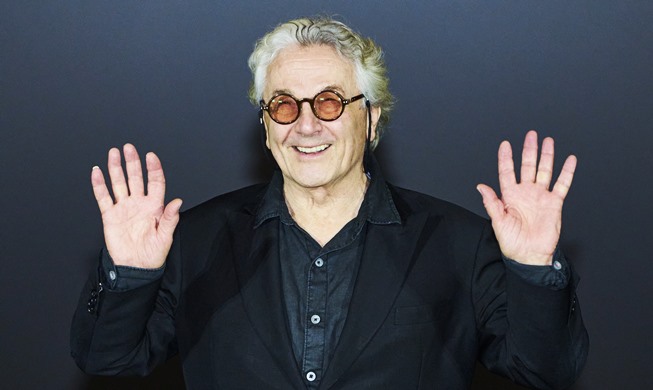-
 Korea.net's 24-hour YouTube channel
Korea.net's 24-hour YouTube channel- NEWS FOCUS
- ABOUT KOREA
- EVENTS
- RESOURCES
- GOVERNMENT
- ABOUT US
- 한국어
- English
- 日本語
- 中文
- العربية
- Español
- Français
- Deutsch
- Pусский
- Tiếng Việt
- Indonesian
Photos = John Paul Vergonia
Who would have taught that a quiet place here in the Philippines was once occupied by a Roman Catholic Korean saint?
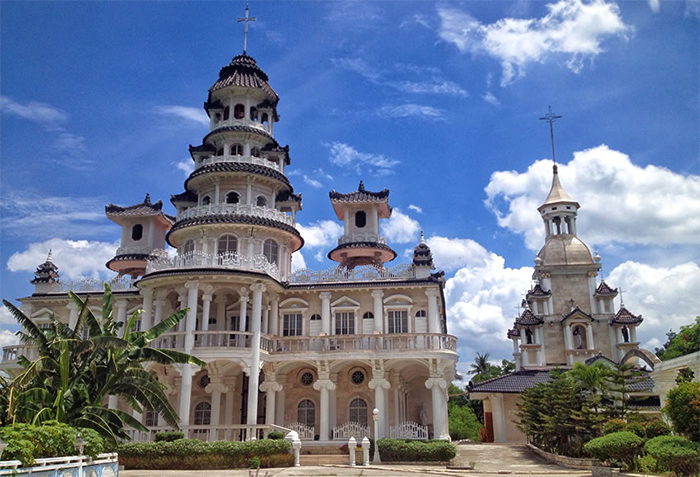
The Shrine of St. Andrew Kim Taegon is in Bocaue, Bulacan, in the Philippines.
In the municipal town of Bocaue, in Bulacan Province in the Philippines, just north of Manila, a captivating shrine was built to honor St. Andrew Kim Taegon (김대건 안드레아), the first Roman Catholic priest and patron saint of Korea who once lived there in the Philippines as a seminarian to study the Dominican sacrament in the early mid-1800s. However, who is Kim Taegon?
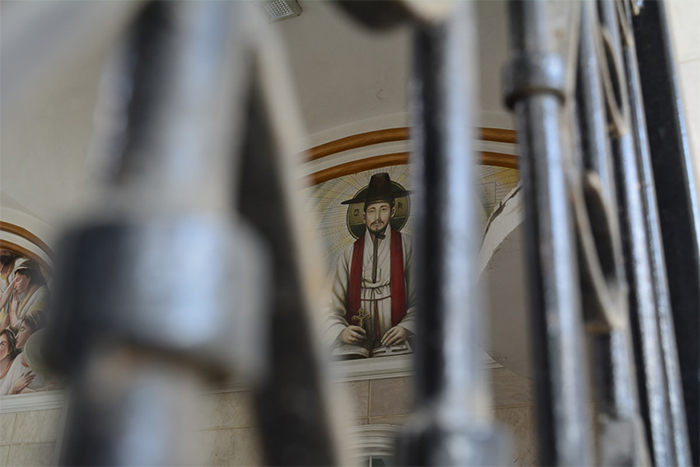
Mural paintings of St. Andrew Kim Taegon can be seen inside the shrine's main hall.
Born as a member of the upper class yangban (양반) elite, Kim Taegon was a seminarian during Joseon times when there was strict persecution of all types of Christians and when the administering of Roman Catholic rites was not allowed.
St. Andrew Kim Taegon is believed to have stayed in Bocaue from 1830 to 1840. He later left for Macau where he was ordained as a priest in the year 1845. Destined to be the first Korea-born Roman Catholic priest, and prompted by his strong faith in God, Kim Taegon succeeded in returning to Joseon Korea the same year in which he led a group of missionaries there. Because of his priestly practice, and because the Joseon state was based primarily on Confucianism and prohibited other religions, he was arrested for 13 months after his ordination and was imprisoned in Seoul near the Han River, where he was condemned as a traitor to Korea and was sentenced to death by the sword.
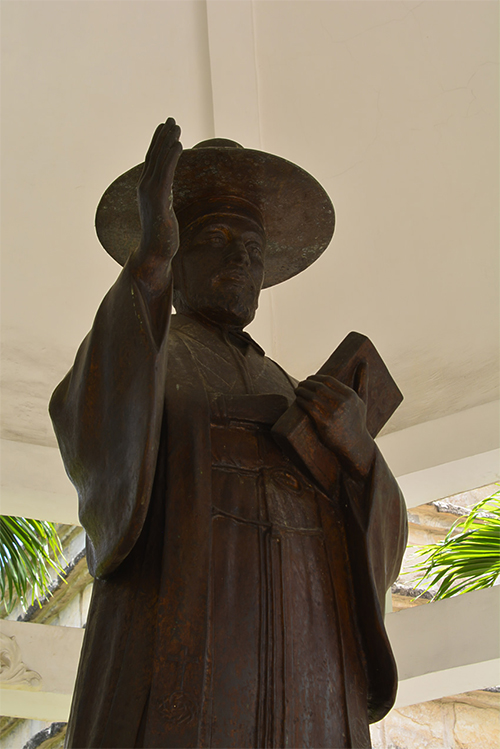
There is a statue of Saint Andrew Kim Taegon in Bocaue, just north of Manila.
Accused of being the leader of a sacrilegious cult, Kim Taegon was beheaded on Sept. 6, 1846, at the age of 26. Nearly 80 years after his death, Pope Pius XI beatified Kim Taegon in 1925. Later, in May 1984, he was canonized into a saint, along with 102 other Joseon martyrs, by Pope John Paul II.
It is only this year that I got to know about the shrine. It has been admired on various social media sites since it’s considered by many to be a piece of Korea in the Philippines. It was also featured on national TV quite a few times, most recently just a few months ago. I immediately set a date to pay a visit to this shrine and to see the place for myself.
Less than one hour from Manila, I was equipped with only a map app and online references. I went to the shrine as early as possible, as it was my first time there and it was only open to the public on scheduled hours.
It was a beautiful Thursday morning, just a few minutes left until the shrine opened, when I arrived at the town of Lolomboy, part of Bocaue, exactly where the Shrine of St. Andrew Kim Taegon is humbly located. It was a different feeling when I first stepped through the shrine’s front gate. Finally, I got to see the place where once lived a Roman Catholic saint who is now recognized as the patron saint of Korea.
Upon entering the shrine, which is actually a complex of buildings, you will see the similarity of design to traditional Korean architecture. The structures are made of concrete, unlike in Korea where most traditional buildings use large amounts of wood and where only the foundation is made of a type of concrete blocks. You can still see a touch of Korean influence in the construction and architecture.
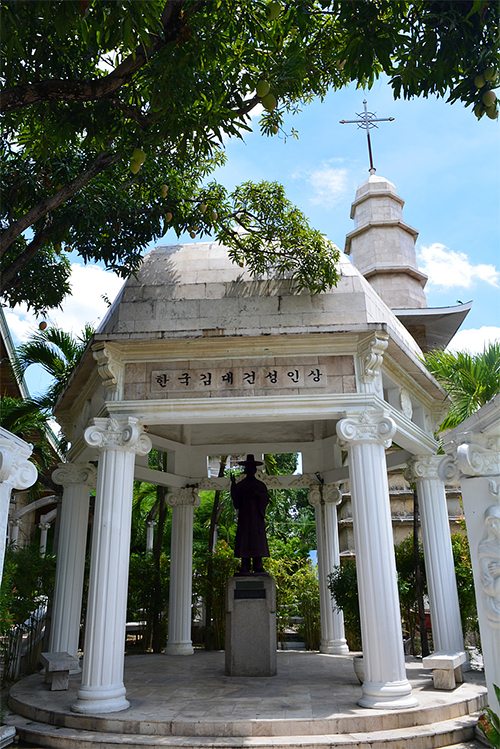
The open pavilion that houses a statue of St. Andrew Kim Taegon stands alongside a fruiting mango tree. The 15-tier pagoda is in the background.
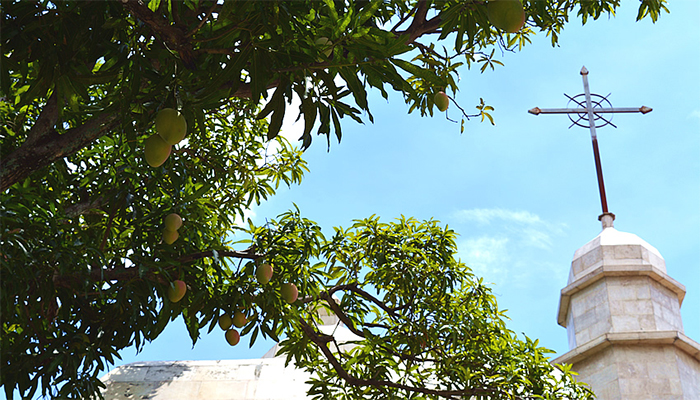
The mango tree plays a significant role in the life of Kim Taegon, especially when he was still a seminarian at the Dominican convent in the Philippines.
After the entrance, an open pavilion welcomes visitors to a bronze statue of St. Andrew Kim Taegon, beautifully enshrined alongside a tall fruiting mango tree and a 15-tier pagoda.
Next to the pavilion is where the St. Andrew Kim Taegon Church is located, which has a simple altar that houses the mango tree wood cross and sacred relics that belonged to the saint. As a Roman Catholic, the first thing I did was to take the opportunity to pray earnestly inside the church, as this was my way of paying my respect to the place and to give thanks for allowing me to visit the blessed shrine.
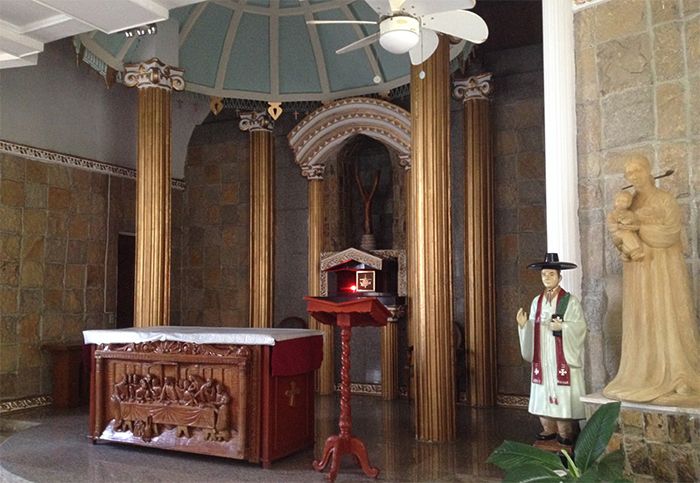
The solemn altar at the St. Andrew Kim Taegon Church is where a mango tree wood cross and sacred relics of the saint are beautifully enshrined.
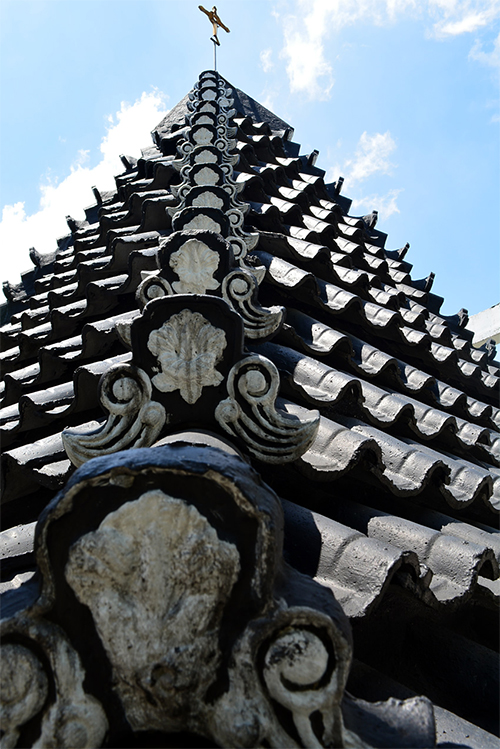
The beautiful pyramid-shaped pagoda is made of carefully arranged Korean roof tiles with a holy cross on top.
The church is surrounded by a concrete bridge that works as an accent to the garden, where the dwarf bamboos shade the pathways connecting it to an inviting small chapel. The towering pagoda and pyramid-like structure is made of stacked Korean roof tiles.
The interior of the St. Andrew Kim Chapel, adjacent to the main church, is quite similar to old churches in Rome where the interior is ornamented with religious images and mural paintings based on characters and scenes from the Bible, such as flocks of angels, apostles, martyrs, Mary, Jesus, and including images of the Korean saint. Moreover, the chapel also features an altar enclosing a wooden image of a holy cross and a rectangular dome adorned with a chandelier. Most prominently, inside the shrine is a holy cross above the dome, which Roman Catholic churches always have.
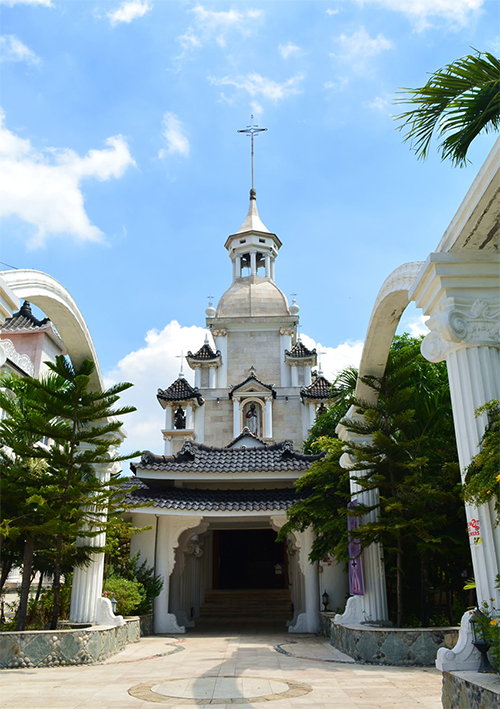
The St. Andrew Kim Chapel features a unique architectural design with features from both Korean and Italian architecture.
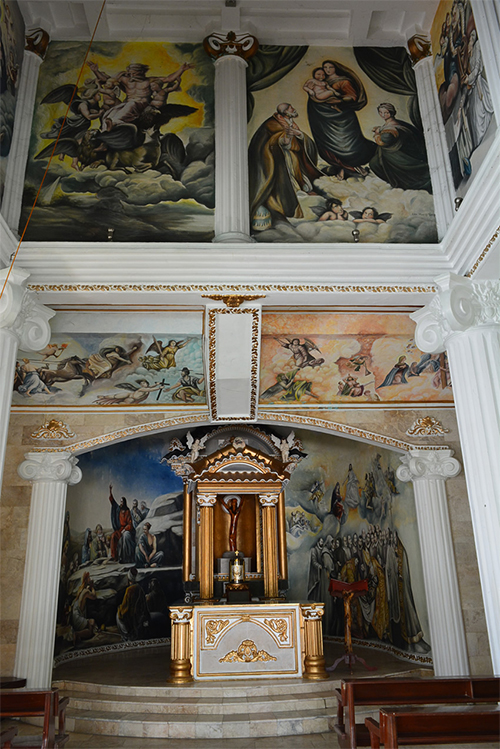
The gold-accented altar in the shrine's chapel stands alongside an artistic mural that depicts characters and scenes from the Bible.
Aside from the structures’ similarity to traditional Korean buildings, considering the tropical climate in the Philippines and the Roman Catholicism of the shrine, the structural style is noticeably a combination of Asian and old Roman architecture. The blending of the different architectural designs has indeed resulted in a beautiful structure and showcases the ways in which combining varied styles can form a unique new form of art.
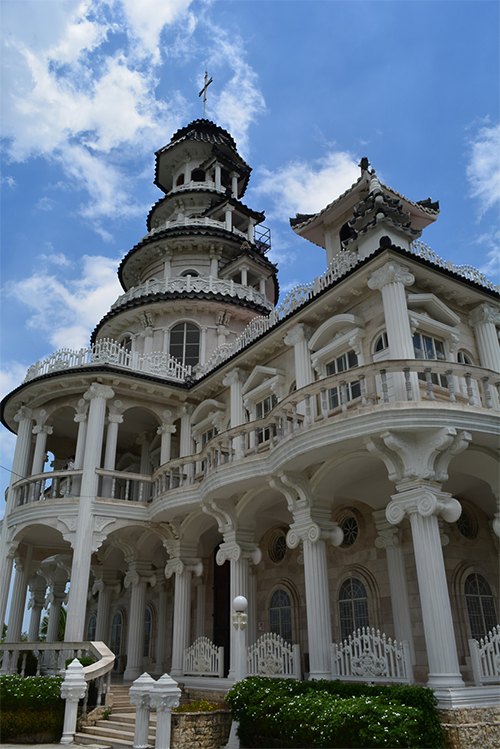
Visitors can see first-hand the architectural prowess of the grand main hall of the Shrine of St. Andrew Kim Taegon.
Furthermore, the Shrine of St. Andrew Kim Taegon also has a main hall that is more majestic than all the structures inside the shrine complex, where a glass rectangular dome brings illumination to the small bridge along with a water fountain just below it. Also, the grand hall, which has a second level composed of a number of quarters, is decorated with wall paintings, as the chapel includes a praying Mary image to the side of the entrance. Besides the interior, it was so enriching to see the outer trappings of the hall, as it shows how grand it was with two different architectural designs combined into one.
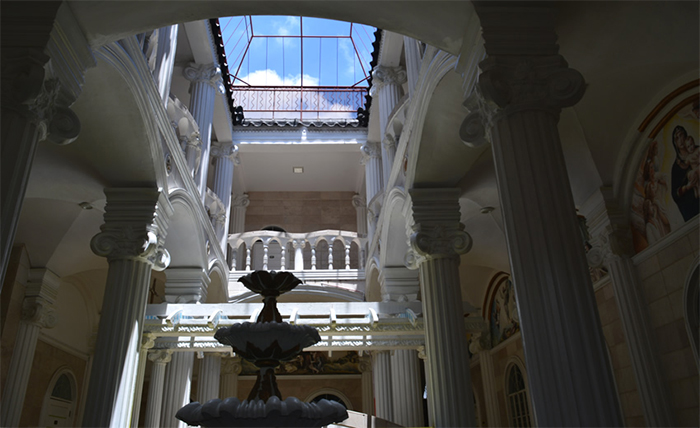
Inside the St. Andrew Kim Taegon main hall there is a glass dome that sheds illumination onto the bridge below.
According to one of the caretakers, a Korean architect led the construction of the entire shrine and it’s actually still being completed, like a nearly finished pavilion and a grand hall that's kind of similar to that at Gyeongbokgung Palace, which overlooks a small lake. Every now and then, the architect returns to the Philippines to continue and to finish the construction.
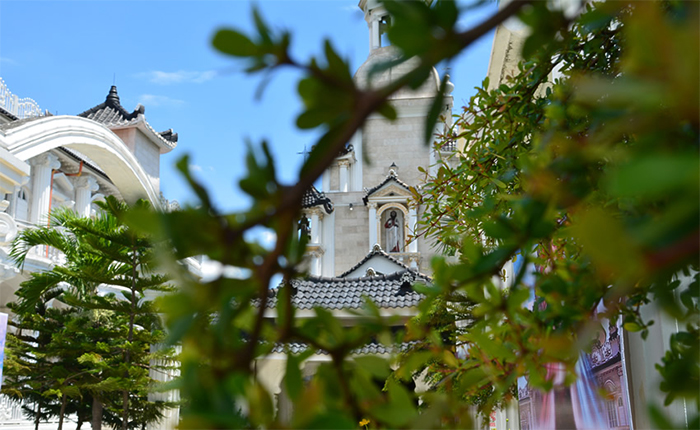
Nuns from the Sisters of St. Andrew oversee the shrine and its beautification by planting ornamental plants all over the compound.
In addition to these structures, facing the shrine is an open two-level octagon pavilion where visitors can enjoy the beautiful view of the complex, including the nearby lake. There's also a convent of the Sisters of St. Andrew where nuns watch over and manage the beautification of the shrine by planting various ornamental and flowering plants. Apple mango trees can be seen all over the complex, as that tree played an important role when Saint Andrew Kim was studying at the then Dominican convent built on the site itself.
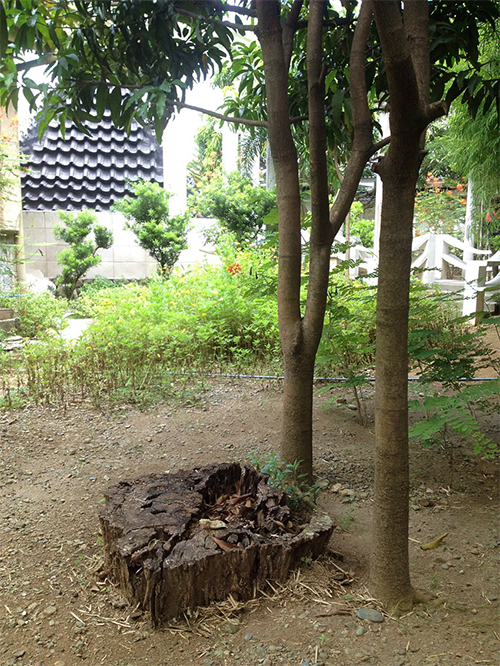
An unearthed trunk of a mango tree is where Kim Taegon prayed every time he missed his family back in Joseon Korea.
As the fruit trees are common in the Philippines, whenever St. Andrew Kim Taegon missed his family back in Korea, he embraced a mango tree near the convent. Although the mango tree died due to lightning, there is still a trace of the roots of that tree. Crosses were made from this tree's wood and they are now placed on the altars at the shrine, church and chapel. When I first saw the root cluster, I felt the saint’s love, as he longed for his family back in Joseon and it was a feeling of solemn blessing as I touched the root for the first time.
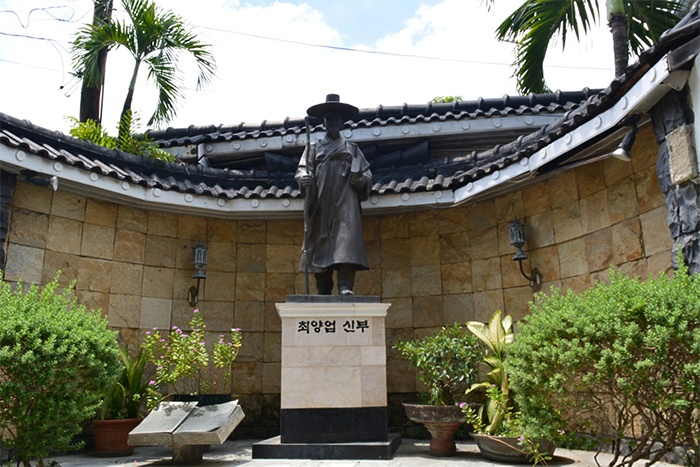
A statue of Thomas Choi Yang-eob, son to St. Francis Choi Kyeong-hwan and Yi Seong-rye, stands in the Philippines. All three of them died alongside the 10,000 martyrs of Korea.
While familiarizing myself with the place, I learned that in addition to the donated statues of St. Andrew Kim Taegon, there are also sculptures of other renowned Korean martyrs and priests in the shrine, such as the statue of Thomas Choi Yang-eob, the first son of St. Francis Choi Kyeong-hwan and Yi Seong-rye, who inherited the Roman Catholic faith and told biblical stories to his children. Choi Yang-eob, a seminarian candidate sent to Macau to study theology during Joseon times, was persecuted alongside the 10,000 Korean martyrs, where the vast majority were just simple lay people.
There is also a bust of Father Joseph Oh Gi-seon. He is a Yongin native who rendered his services by caring for around 3,000 orphans during the Korean War and who, after his retirement in 1971, devoted himself to setting up commemorative statues of St. Andrew Kim Taegon in both Macau and in Lolomboy in the Philippines. At present, Korea has the fourth largest number of saints in the Roman Catholic world.
The shrine's building in honor of St. Andrew Kim Taegon in Lolomboy in Bocaue, Bulacan Province, just north of Manila, hopes to help encourage a wider following of the Korean saint in the Philippines, in which he is also the secondary patron saint of the local parish. Every July 5, the Feast of St. Andrew Kim Taegon is celebrated in the town with various church activities in honor of the saint.
In my half-day at the shrine, I learned much about early Roman Catholicism in Korea, which was introduced mostly by lay people until the severe persecutions of Roman Catholics, and I learned how the Roman Catholic community suffered during Joseon times. Through such learning, it made me believe more strongly in my religious faith.
I can say that this is one of the most beautiful shrines and blessed experiences I have ever had in my entire life. I look forward to visiting again when construction has been completed and hopefully with my whole family next time.
wisdom117@korea.net
http://koreanetblog.blogspot.kr/2017/07/roman-catholic-shrine-built-to-honor.html
Most popular
- First hearing-impaired K-pop act hopes for 'barrier-free world'
- Event 'K-Beauty Hang Out' draws hundreds in Philippines
- 'Mad Max' director impressed by 'cinema-literate' Korean viewers
- Ceremony in Seoul inducts 2,641 content creators of Korean culture
- Romanian presidential couple visits national cemetery




